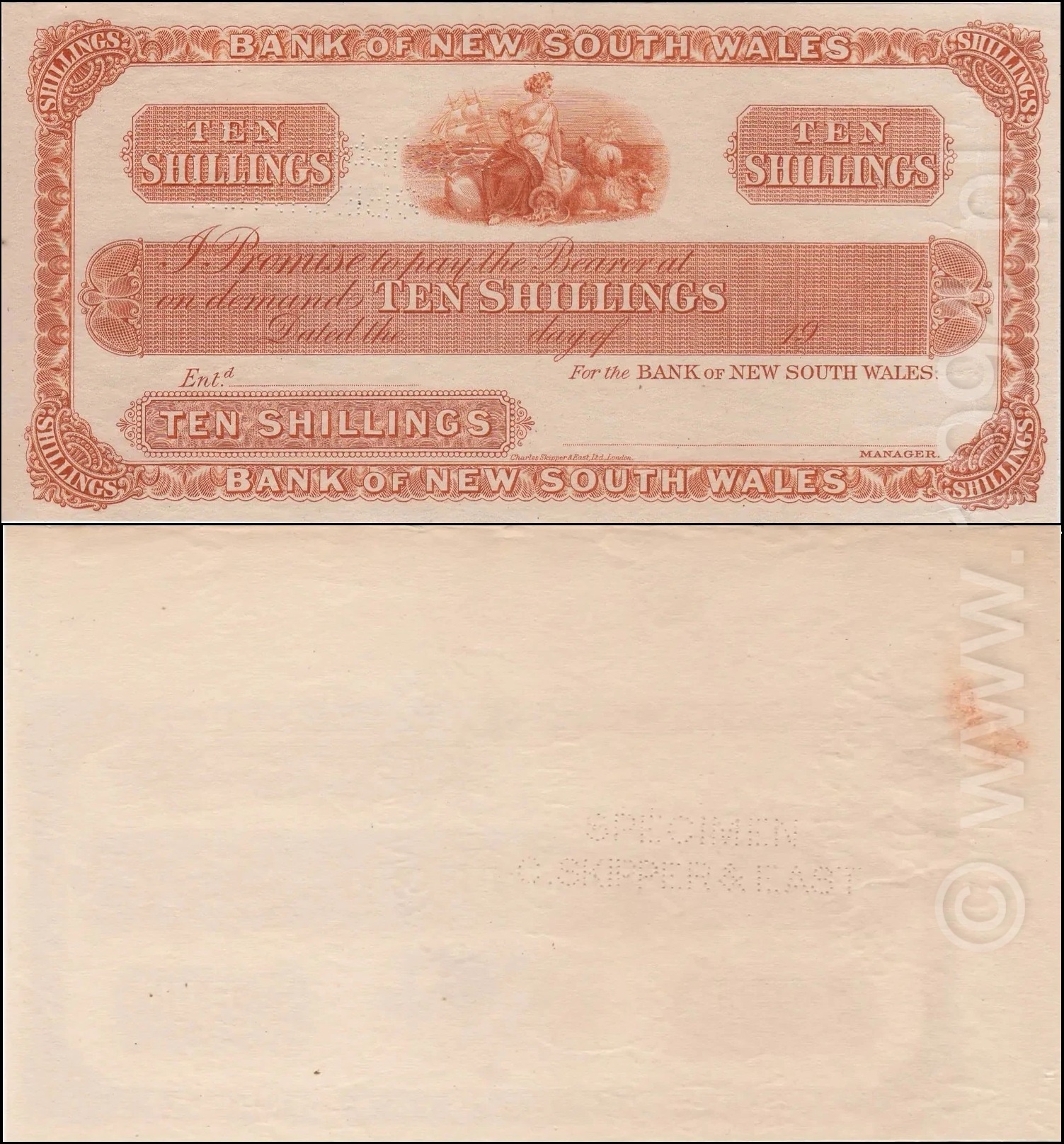Description and research notes
Printer’s archival proof for the Bank of New South Wales Ten Shillings, classified in the Standard Catalog and PMG system as New Zealand Pick S161s (ND 1924–1933) and attributed to Charles Skipper & East, London. Although cataloged under New Zealand because of the bank’s cross-Tasman operations and later currency context, this piece is fundamentally an Australian bank design printed in London—typical of interwar colonial practice where London firms supplied house styles for banks active across Australasia.
This specimen is single-sided in orange-red with full untrimmed margins, a blank reverse, and the characteristic perforated legend “SPECIMEN C. SKIPPER & EAST.” The word SPECIMEN is created through a matrix of fine pinholes—known as a perforated control marking or pinhole-perforation—used by the printer to identify proof material. This control perforation was applied by the engraver, not by an issuing authority, and therefore certifies the note as an internal archival proof rather than a cancelled circulation note.
The face exhibits Skipper & East’s precise ornamental guilloché, dense microlettering within the value panels, and a central maritime-agricultural vignette showing an allegorical female figure with sheep in the foreground and a fully rigged ship behind—an allegory of trade and production across the Australasian region.
Why ND (1924–1933) for a design that appears earlier? Skipper & East frequently reused master steel plates over several decades, updating lettering and borders as banking charters evolved. PMG and the SCWPM date range corresponds to the period during which the Bank of New South Wales operated in New Zealand under this design lineage, not necessarily to the initial engraving date of the plate. As a proof or remainder, this note exists outside normal issue chronology, documenting the printer’s final working model for the ten-shilling denomination.
Technical diagnostics for this proof include: single-color intaglio printing with deep, even inking; sharply defined microtext within the “TEN SHILLINGS” cartouches; blank reverse confirming proof stock; perforated legend “SPECIMEN C. SKIPPER & EAST” normally positioned slightly left of center; and plate paper showing light waviness from the tinting form. The combination of blank reverse and fine pinhole-perforation distinguishes authentic archival proofs from later souvenir or imitation pieces.
Rarity and grading context: scarce to rare (approximately R-6). Only a few dozen printer’s proofs are believed to survive in private or institutional collections. Certified population reports at PMG and PCGS remain low, with surviving examples generally grading between About Uncirculated 58 and Gem Uncirculated 65 depending on edge handling and storage quality.
As a research artifact, this proof embodies three converging stories: London’s contract engraving tradition for colonial banks, the Bank of New South Wales’ regional operations that later defined its New Zealand classification, and the use of perforated control markings—fine pinhole matrices forming SPECIMEN legends—as a printer’s archival security device. It is not an issued note but a workshop original demonstrating the technical and artistic standards of early twentieth-century colonial banknote production.
